In this blog, we will be talking about 10 amazing palaces in Portugal. Most of these palaces are now listed as monuments and seeing them is essential due to their impressive architecture, intriguing interiors, and numerous surprises and quirks.
Top 10 Palaces in Portugal
Ajuda Palace, Lisbon
North of the Jeronimos Monastery in Belem, Lisbon, is where you can find the Neo-Classical Palace of Ajuda. It was constructed on 9th November 1794. The Palace of Ajuda is built in a rectangular shape, with four wings arranged around a sizable courtyard that is covered in Portuguese pavers. Several gardens, including the vast Jardim Botânico d’Ajuda and the Jardim das Damas (Lady’s Garden), surround the palace (Ajuda Botanical Garden). Take the 760 Gomes Freire bus at R. S. Lázaro which is from Lisbon to the Palace of Ajuda. It costs 3 Euros and takes 16 minutes. Unless it’s Monday or a holiday, the Ajuda Palace is open from 10:00 to 17:00 every day. The entry fee is five euros. Every Sunday from 10 am to 2 pm, admission is free.
Bolsa Palace, Porto
The Palácio da Bolsa, also known as the Stock Exchange Palace, is where the Porto Commercial Association is currently headquartered. This is one of my favourite palaces in Portugal. The neoclassical structure was built in the middle of the nineteenth century and is in the heart of the city, near to St. Francis Church. Although the Palácio da Bolsa was constructed in 1842, it wasn’t opened until 1891. The Pátio das Naçes (Courtyard of the Nations) is a sizable central courtyard inside this neoclassical National Monument. It is surrounded by a glass structure that allows excellent natural light into the entire Palace.
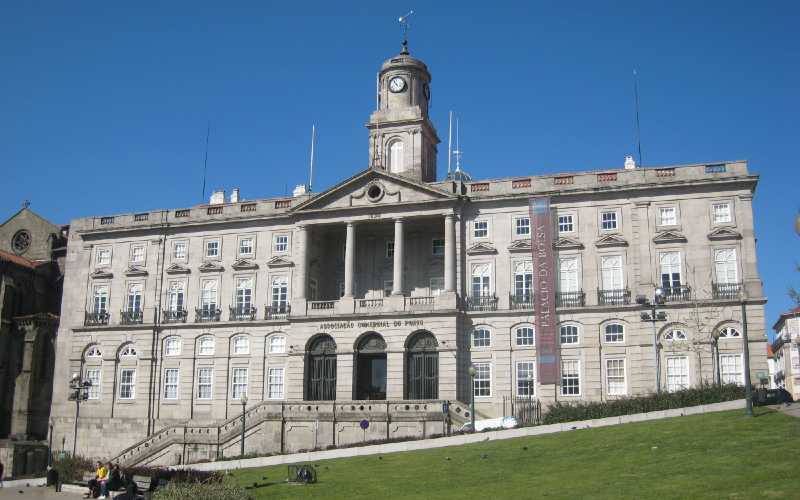
It is open from Monday – Sunday 9 am to 6:30 pm and is 10 Euros per person. The cheapest way to get from Porto to Palácio da Bolsa is the line 500 bus which costs 3 euros and takes 4 minutes.
Pena Palace, Sintra
In 1854, the Romanticist castle known as the Pena Palace in Sintra was built. It may be seen from Lisbon with ease on a clear day because it is located on top of a hill overlooking the town of Sintra. This is by far the most beautiful palace in Portugal. Numerous people are welcomed each year to the national monument, which is well-known for its distinctive architectural characteristics and sizable woodland park.
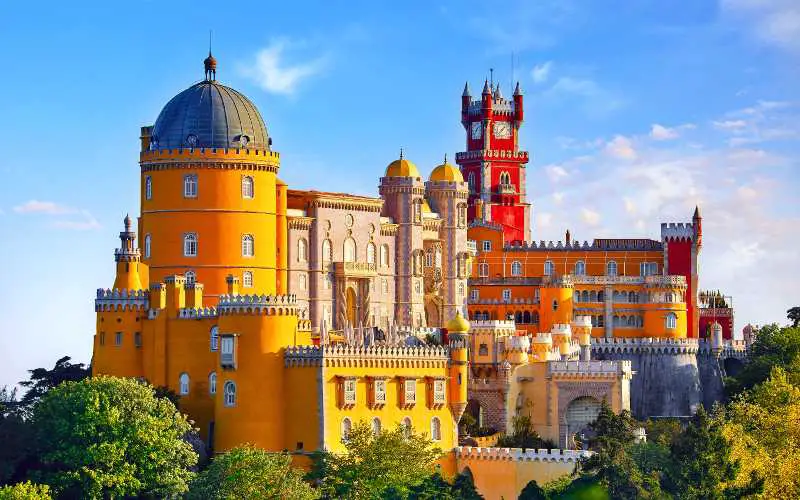
There are a variety of amenities available at Pena Palace, including wheelchair accessibility, coffee shops, and restaurants. From 9:30 am until 6:30 pm, the Pena Palace in Sintra is open every day. At 6:00 PM, the door will be shut. 7.5 euros are required for entry. Follow the street and look for Bus 434 as you exit the train. You’ll get to Sintra Town via this to get to the station.
Mafra National Palace
Mafra’s National Palace was constructed in 1717 by the Portuguese monarch D. Joo V as a pledge to God to have a son and is conveniently positioned in the centre of Mafra. This significant baroque structure is regarded as Portugal’s most significant baroque example. This stunning palace has more than 38.000 metres in length, more than 1.200 unique rooms, and 4700 doors and windows. It was constructed from local limestone.
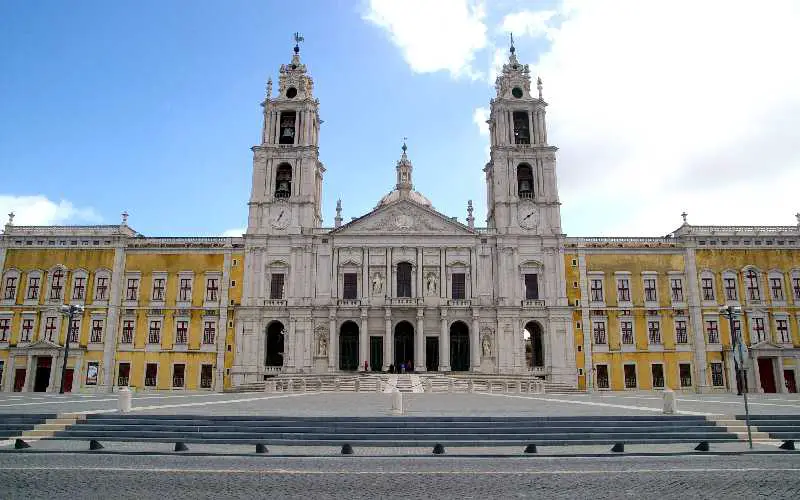
Every day except Tuesdays, from 10 a.m. to 5 p.m., there is an entrance cost of 6 euros. There isn’t a direct route that runs from Lisbon to Mafra National Palace. On the other hand, you can take the subway to Campo Grande, walk to Lisboa – Campo Grande, take the line 209 bus to Convento de Mafra, and then walk to Mafra National Palace. As an alternative, you might take a taxi to Mafra National Palace.
National Palace of Queluz
The 18th century is when the Royal Palace of Queluz was built. One of the last substantial Rococo-style structures built in Europe, the palace was constructed as Don Pedro de Bragança’s summer residence. The palace, which was originally the location for banquets, balls, theatre, concerts, games, equestrian and firework displays, now features lavish settings for devotion and private apartments that are closely connected to the outer world. The history on show, most of it from royal collections, reflects the elegant ambiance of the Palace’s golden age in the gilded woodcarving and papier mâché works, walls lined with mirrors or paintings, and brilliant chandeliers, of tremendous decorative effect.
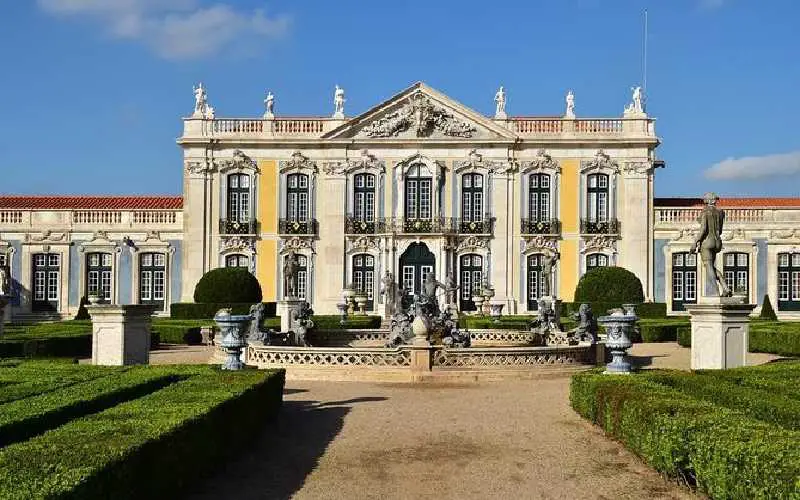
The entrance fee costs 10 euros. It is open from Monday to Saturday 9am to 6pm. Vimeca Buses offers a direct bus service between Lisbon and Queluz (route 101), however it isn’t as convenient to take the bus as it is to take the rail. The bus ride is lengthier and leaves from the bus station at Colegio Militar. Two trains run between Lisbon and Queluz. Both leave from the Estacao do Oriente and Rosio station.
Praca do Comercio, Lisbon
Possibly the most recognised and well known of the palaces in Portugal is Praca do Comercio in Lisbon. It was constructed after the Lisbon earthquake of 1755. Praça do Comércio is a sizable square plaza that has the Tagus River on one side and a grand arch, the Arco Triunfal da Rua Augusta, on the other. This arch has six columns and is ornamented with enormous statues that can be viewed from below. King José I’s horse-mounted statue is in the middle of the square. The entrance fee only costs 2.5 Euros and is open everyday from 9am to 7pm. Terreiro do Paço is the name of the blue line metro stop in Praça do Comércio. The blue and green lines’ Baixa-Chiado station is close by.
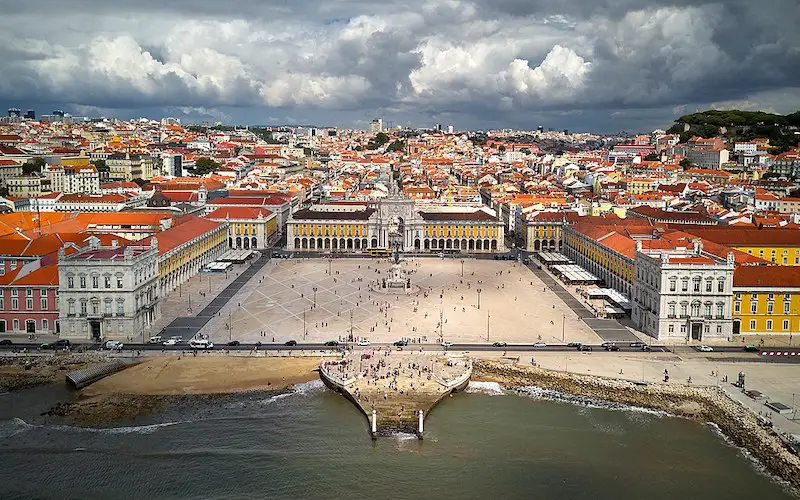
Park and Palace of Monserrate, Sintra
The Monserrate estate is the ideal representation of Portuguese Romanticism and eclecticliving in the 19th century. Additionally, its “exotic” architecture is a result of a fusion of Gothic, Indian, and Moorish elements, and it harmoniously complements a botanical park that supports a diverse array of plant species. To serve as a summer home for Sir Francis Cook, an English businessman connected to the textile industry, construction on the Palace of Monserrate started in 1856. The price is 8 euros and is open everyday from 9am to 7pm. The 435-tourist bus is the best method to go to Monserrate Palace, which is located 3.5 kilometres from the heart of Sintra.
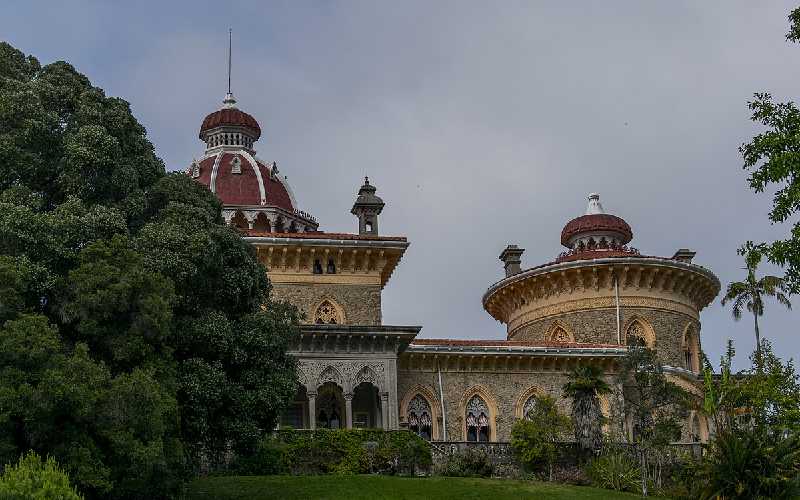
Foz Palace, Lisbon
The 18th-century elegant castle known as the Palacio Foz now houses the Lisbon tourism office and frequently hosts neighbourhood activities. It was originally built in the Baroque style, but Italian architect Francesco Saverio Fabri later rebuilt it, giving it a more Italian appearance. Palácio Castelo Melhor, the palace’s previous name, was changed in honour of the marquis of Foz, who was living there at the time, in the nineteenth century. Its exterior, which is multi-story and painted rose, takes up most of a block. The inside is lavishly embellished with decorative arts, magnificent marble, ornate iron balconies, finely painted ceilings, and walls, and maybe most significantly, mirrors. It is open everyday from 9am to 7pm and costs 5 Euros. In the heart of Lisbon, near Restauradores Square, is where you’ll find the palace. The Rossio Square metro stop on the Azul line and city buses 207, 732, and 736 are both accessible to tourists. Additionally, the Rossio train station, which is close to the palace, is serviced by the Linha Sintra line.
Belem Palace, Lisbon
The Belém Palace was constructed in what is today a historic area of Lisbon in the 18th century. The complex, which consists of five buildings, blends aspects of the Baroque and Mannerist architectural movements. Since 1910, the president of Portugal has occupied it as his or her official house. It also serves as the location of the Presidential Museum, which explores republican history. It is open everyday from 10am to 6pm expect Mondays and costs 10 Euros per person. The train station in Belém is at a short distance from Belém Palace. The train that leaves for Cascais from Cais do Sodré Station every 20 minutes is the quickest method to get there. In about seven minutes, it reaches Belém. Buses 714 and727, as well as tram 15 are other options.
Pousada Estoi Palace
The Pousada Palácio de Estoi (a hotel), which boasts 63 rooms, French-style gardens, an outdoor swimming pool with a view of the sea and the mountains, as well as all the modern conveniences, is distinguished by the rich and decorative architecture created by the restoration of a 19th century palace while maintaining its original features. In partnership with the Faro Municipal Museum, the former reception room will now serve as a new venue for exhibits from a museum collection devoted to the history of the area and its diverse Roman, Islamic, and classical influences. Rooms cost around £90. Hours are Monday through Saturday. Open from 9 am to 12 pm and from 2 pm to 5:30 pm. It will take 1 hour and 45 minutes to travel by bus from Faro Airport (FAO) to Pousada Palacio de Estoi.
These are some of the best palaces in Portugal and are worth visiting. There is a lot of history tied in the palaces and the archaeology is very interesting. Be sure to visit one of these palaces on your next visit to Portugal, I guarantee you will not forgot your trip!

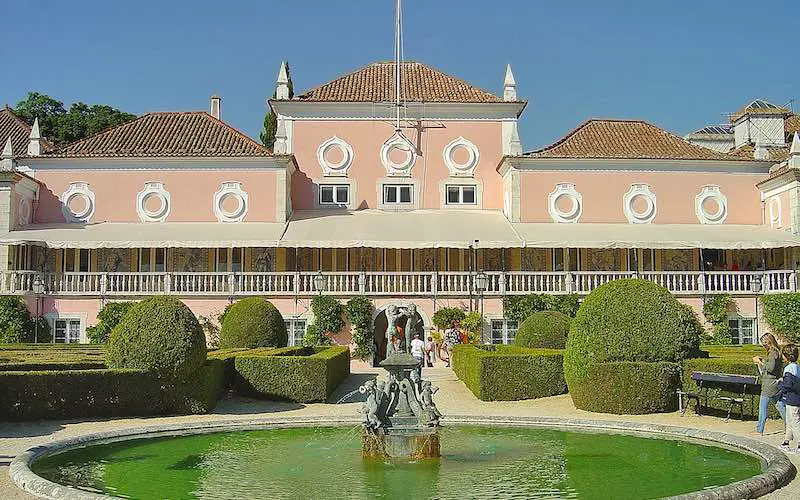

1 thought on “10 Amazing Palaces in Portugal”